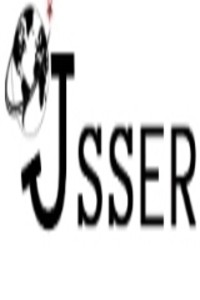Student Attitudes toward Technology Enhanced History Education: Comparison between Turkish and American Students
Student Attitudes toward Technology Enhanced History Education: Comparison between Turkish and American Students
Similar with all educational approaches in technology enhanced instruction teacher and student attitudes toward the new approach plays a critical role in determining its effectiveness. The purpose of the study is to examine Turkish and American student attitudes and thoughts toward the use of educational technologies in history courses and the factors that might affect their attitudes. The study also aims to compare the results to determine whether there are any differences between the attitudes of Turkish and American student.This study was conducted with 197 American students from Upper Saint Claire High school in Pittsburgh, PA, and 214 Turkish students from Konya High school who volutered for this study. The required data for this study were gathered by a 26-item technology questionnaire, which included 7 multiple-choice questions and 19 Likert scale questions. This questionnaire was developed to gather data on five different areas of interest: (1) demographic information, (2) participants' computer- and Internet-usage skills, (3) the level of technology used in history classrooms, (4) participants' attitudes toward technology-enhanced history education, and (5) participants' attitudes toward history. Most of the Turkish and American students rated themselves as being very well experienced on the eight computer- and Internet-usage skills targeted in this study. But the comparison of the data indicated that American students have higher computer- and Internet-usage skills than Turkish students do, and this difference is statistically significant (p = 0.001). Most of the Turkish and American students showed positive attitudes on using educational technologies in history classrooms. A majority of the Turkish and American students stated that they would be able to focus and learn better if more technological materials were used in classroom activities, and this, in turn, would increase their academic achievements.
Keywords:
Secondary education, History Education, IT-use Comparative study,
___
- Bhattacherjee, A. & Premkumar, G. (2004). Understanding changes in belief and attitude toward ınformation technology usage: a theoretical model and longitudinal test. MIS Quarterly, Vol. 28 (2), pp. 229-254. Retrieved from: http://www.jstor.org/stable/25148634
- Brown, G. S. (2001). The coming of the french revolution in multi-media. History Teacher, 34 (2), pp. 193-208. Retrieved from: http://www.historycooperative.org/journals/ht/34.2/brown.html
- Butler, K., & Lumpe, A. (2008). Student use of scaffolding software: relationships with motivation and conceptual understanding. Journal of Science Education & Technology, 17(5), 427-436.
- Cretchley, P. (2007). Does computer confidence relate to levels of achievement in ICTenriched learning models? Education and Information Technologies, Volume 12(1), 29-39.
- Demircioglu, I. H. (2002). Does the teaching of history in Turkey need reform? Retrieved from: http://www.centres.ex.ac.uk/historyresource/journal3/turkey.pdf Journal of Social Studies Education Research 2010: 1(1), 152-167
- Eagly, A. H., & Chaiken, S. (1998). Attitude structure and function. In D. T. Gilbert, S. T. Fiske, & G. Lindzey (Eds.), Handbook of Social Psychology (Vol. 1, p. 269-322).
- Boston, MA: McGraw-Hill. Frankel, J., Wallen, N., and Sawin, E.I. (1999). Visual statistics. Boston et al: Allyn and Bacon.
- Garson, G.D. (2008). Scales and Standard Measure. Retrieved on June 16, 2008 from: http://faculty.chass.ncsu.edu/garson/PA765/standard.htm
- Haydn, T. (2002). Subject discipline dimensions of ICT and learning: history, a case study. International Journal of Historical Learning, Teaching and Research, Vol. 2(1). Retrieved from: www.heirnet.org/IJHLTR/journal3/haydn.doc
- Hill, J. (2000). Web-based instruction: Prospects and challenges. Educational Media and Technology Yearbook, 25, 141-155.
- Kan, A. & Akbaş, A. (2006). Affective factors that influence chemistry achievement (attitude and self efficacy) and the power of these factors to predict chemistry achievement-I. Journal of Turkish Science Education, 3(1): 76-85.
- Loewen, J.W. (1995). Lies my teacher told me. New York: The New Press.
- Munck, M. (2007). Science pedagogy, teacher attitudes, and student success. Journal of Elementary Science Education, Volume 19 (2), p. 13-24.
- Ozbaran, S. (1994). Önce tarihi yeniden tanımlayalım. Tarih Öğretimi ve Ders Kitapları
- Sempozyumu: 1994 Buca Sempozyumu. Istanbul: Tarih Vakfı Yurt Yayınları.
- Parsons, D. (1999). Restoring the past: a history teacher’s response to James Loewen’s lies my teacher told me. Available: http://eiffel.ilt.columbia.edu/ TEACHERS/ cluster_teachers/Dick_Parsons
- Safran, M. (1993). Lise öğretmen ve öğrencilerine göre tarih dersinin amaçları.. Gazi Üniversitesi Eğitim Fakültesi, 3, p.35-46.
- Sanders, D. W. & Morrison-Shetlar, A. I. (2001). Student attitudes toward web-enhanced instruction in an introductory biology course. Journal of Research on computing in Education. 33(3), 251-262.
- Seels, B. and Richey, R. (1994). Instructional technology: The definition and domains of the field. Washington, D.C.: Association for Educational Communications and Technology.
- Taylor, T. (2003). Historical simulations and the future of the historical narrative. Journal of the Association for History and Computing 6(2). Retrived from: http://mcel.pacificu.edu/JAHC/JAHCVI2/ARTICLES/taylor.HTML#020
- TUİK, (2005). Bilişim teknolojileri kullanımı. Türkiye İstatistik Kurumu, Ankara. http://www.tuik.gov.tr/AltKategori.do?ust_id=2
- TUİK, (2007). Bilişim teknolojileri kullanımı. Türkiye İstatistik Kurumu, Ankara. http://www.tuik.gov.tr/AltKategori.do?ust_id=2
- Turan, I. (2010). Student readiness for technology-enhanced history education in Turkish high schools. Cypriot Journal of Educational Sciences. 5 (2), p. 94-106.
- Yildirim, S. (2007). Current utilization of ICT in Turkish basic education schools: a review of teacher's ICT use and barriers to integration. International Journal of Instructional Media, 34(2) 171-186.
- Başlangıç: 2010
- Yayıncı: Bülent TARMAN
Sayıdaki Diğer Makaleler
Computer technology in education and issues of power and equity
Social Studies Education and a New Social Studies Movement
An Investigation of Pre-Service Teachers' Perception of Historical Time Through The Time Tables
The Efficiency of Being Scientific Value Focused Character
Ahmet KATILMIŞ, Halil EKŞİ, Cemil ÖZTÜRK
The Views of Teachers on the Upper Primary Social Studies Curriculum and Its Practice
Uygulanması Hakkında Öğretmen GÖRÜŞLERİ, Erkan DİNÇ, Yasin DOĞAN
